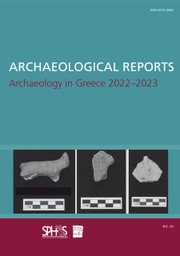No CrossRef data available.
Article contents
Recent research in Early Helladic southern Greece
Published online by Cambridge University Press: 13 February 2018
Extract
The Early Helladic period on the Greek mainland is a time of complexity and innovation, characterized by a marked regionalism in settlement patterns and material culture, and the presence of myriad crossscale networks within which objects, technologies, ideas and individuals circulated. Nevertheless, much about the period remains unclear beyond the relative comfort of its long ‘middle’ phase, Early Helladic II (ca. 2950–2250 BC). Its emergence from the socio-cultural processes of the Final Neolithic, particularly, continues to be obscured by a ‘fourth-millennium gap’ which has proved frustratingly intransigent. Of those few Peloponnesian sites yielding radiocarbon dates which potentially fall within the fourth millennium, those of Franchthi (FCP 5.2, P-1659, ca. 4,230–3,790 cal. BC; see Vitelli 1999: table 9), Kouveleiki Caves A and B (ID1492; Kontaxi 2006) and Alepotrypa (Bronk-Ramsey et al. 2015: 200) fall well short of its mid-point. Halieis alone potentially bucks the trend (ca. 3,909–3,367 cal. BC; Pullen 2000: 184–86; see also Alram-Stern 2007), although the range on this sample is so great as to be problematic.
- Type
- Archaeology in Greece 2016–2017
- Information
- Copyright
- Copyright © Authors, the Society for the Promotion of Hellenic Studies and the British School at Athens 2017




